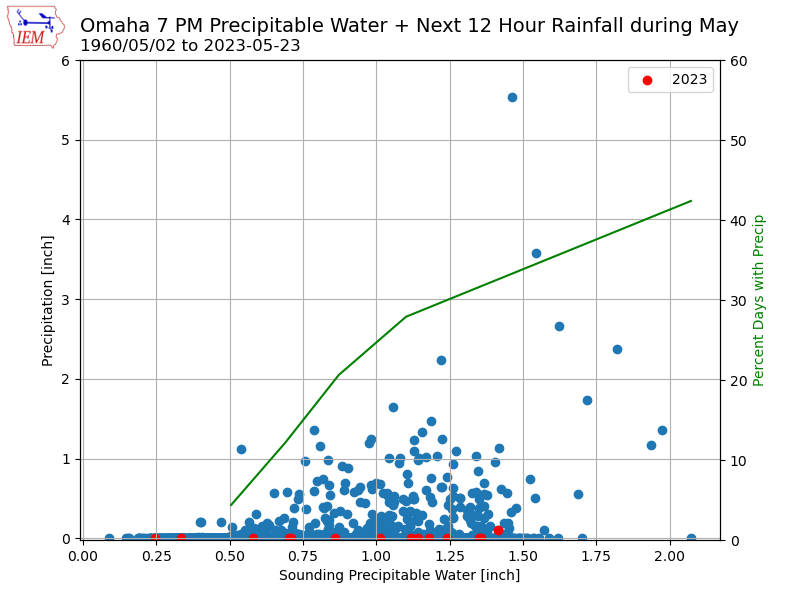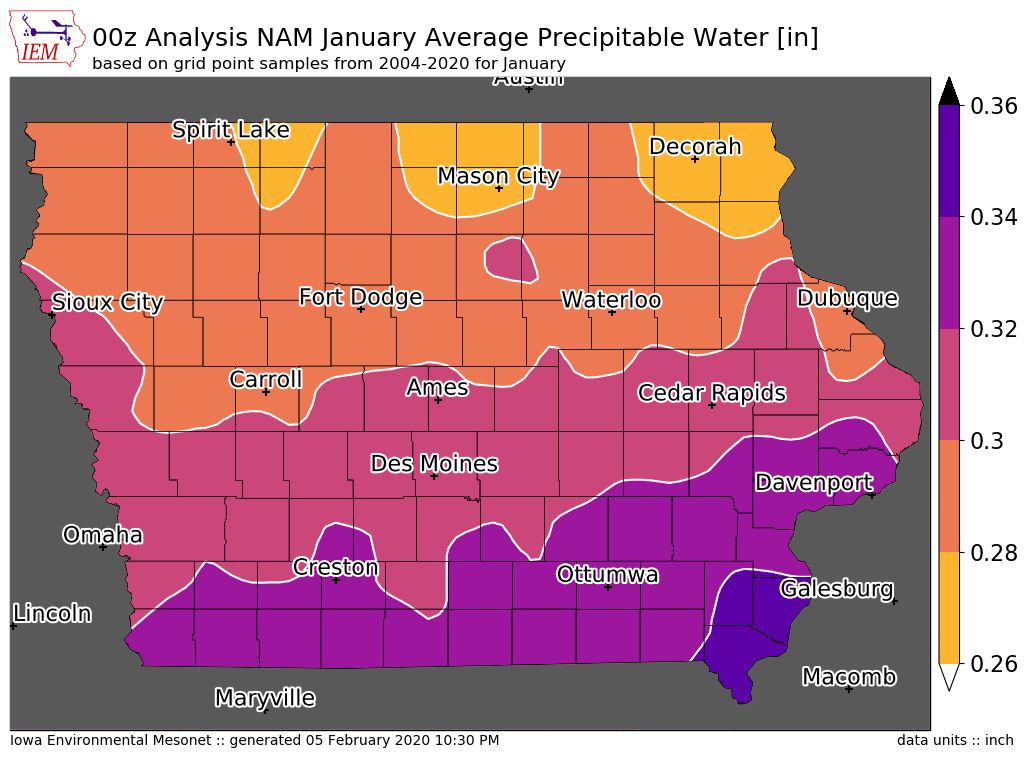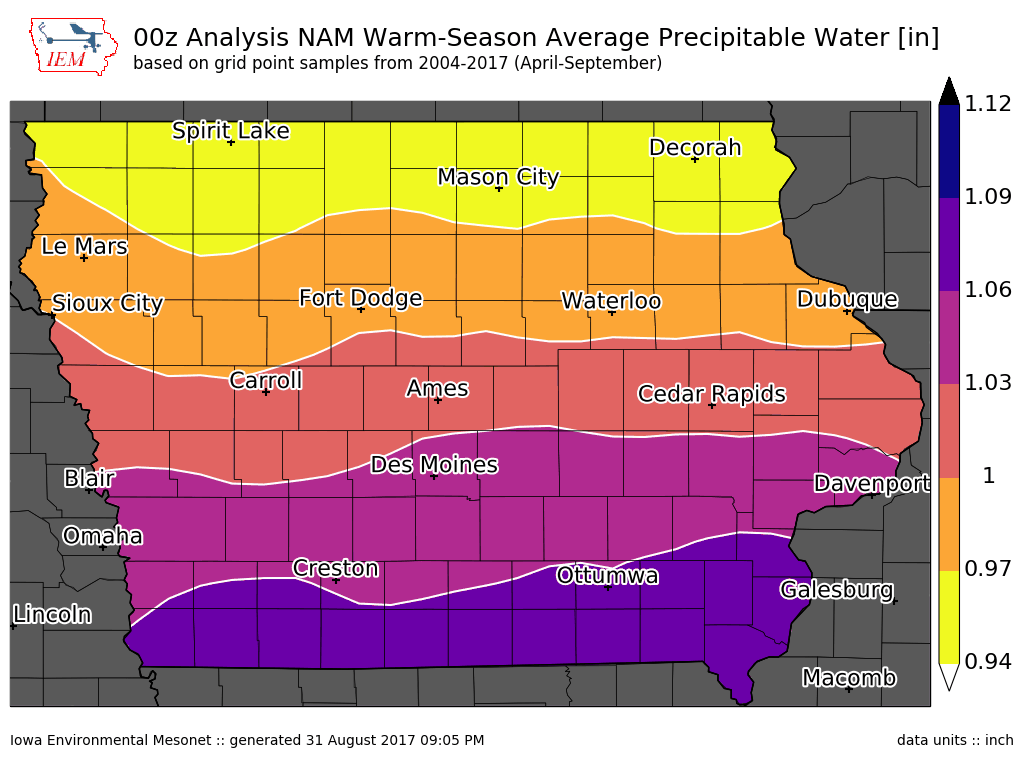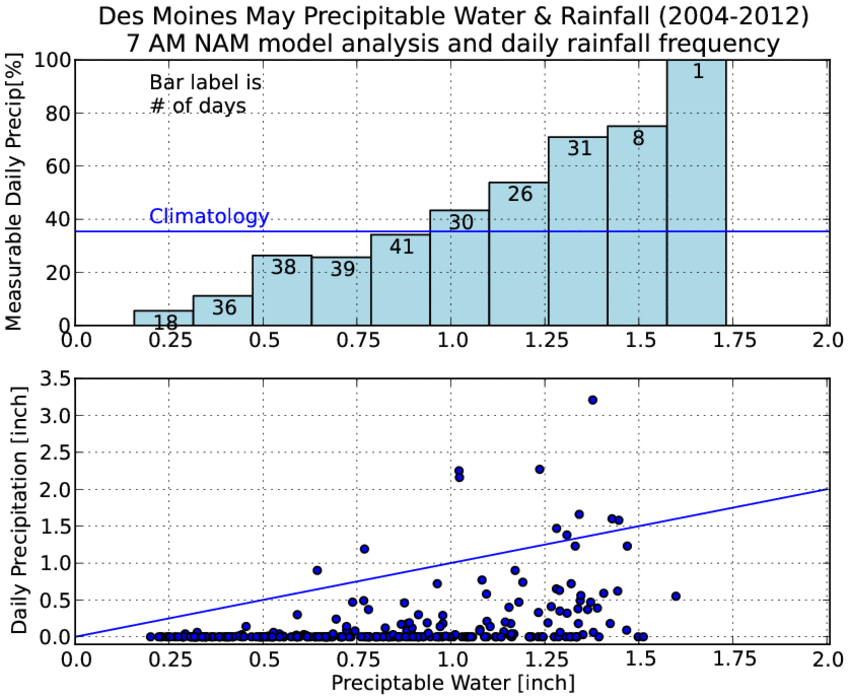Past IEM Features tagged: precipitablewater
May Precipitable Water + Rain
25 May 2023 05:20 AMThe NWS office near Omaha launches a weather balloon at 7 AM and 7 PM each day to sample the troposphere for weather variables like temperature, humidity, pressure, and wind speed. This vertical profile can be evaluated for the amount of water vapor present and is expressed as a liquid water depth called precipitable water. Rewording, if you condensed all the water vapor in a column of air, what depth of water would that equate to. This metric is very useful for a number of weather forecasting needs as it can ballpark potential rainfall rates. The featured chart compares the 7 PM sounding for May precipitable water against the following twelve hours of accumulated precipitation for Omaha. The dots represent the combination of those two and the line is an estimate of the percentage of days with precipitation. The chart nicely shows the usefulness of this metric for precipitation forecasting. It is very difficult for a dry (low precipitable water) atmosphere to produce precipitation and higher precipitable water amounts allow for larger precipitation totals. The red dots show the 2023 values.
Voting:
Good: 11
Bad: 0
Tags: precipitablewater sounding
January Precipitable Water
06 Feb 2020 05:36 AMPrecipitable water is a measure of the depth of water within a column of the atmosphere if all available water fell as rain. The featured map presents a climatology of this value over Iowa during January based on some Iowa-only archives of a weather model called NAM. This value has many uses in forecasting including assessing of how intensely it can rain given storms. Values shown range from about 0.25 to 0.33 inches and indicate the general lack of moisture this time of year due to air at cold temperatures holding less water.
Voting:
Good: 13
Bad: 0
Tags: precipitablewater
Precipitable Water
01 Sep 2017 05:34 AMThis week the daily features have been looking at precipitation climatologies for Iowa. In general, there is a northwest to southeast pattern with intensities increasing the further south you travel. One of the reasons for this gradient is the featured map for today. It shows a climatology from one of the main weather forecast models in this country for a variable known as preciptable water. This term is simply the depth of liquid water in the atmosphere above our heads if all of the water was condensed. The amount of water in the atmosphere is important to consider when looking at rainfall rates. The water coming as rain has to come from somewhere. So while the differences shown on this plot may not look large, on average a storm in southern Iowa will have about 10% more water (primarily water vapor) to work with than a storm over northern Iowa. These difference add up over the course of a year and help explain the differences in amount of rain. The observant reader may wonder why then there is not a more NW to SE gradient? Generally, that is likely more to do with the common storm track paths, which is a proxy to jet stream orientation.
Voting:
Good: 21
Bad: 1
Tags: precipitablewater
May Precipitable Water
24 May 2012 05:55 AMOne of the reasons for our recent lack of rainfall has been the dearth of precipitable water. Precipitable water is a measure of depth of water in a column of air if all phases found were converted to liquid. The featured chart presents the combination of preciptable water analyzed by a weather forecast model and the total rainfall for that day. The upper chart presents the frequency of having rainfall on a given May day partitioned by preciptable water value. Increasing water content in the atmosphere increases our chances of rain. The lower chart presents the combination of daily precip observations against the precipitable water value. The one to one line shows that often the preciptable water value provides an upper bound to the amount of rainfall we may receive. Advection processes help to replenish atmospheric water content so we can get rainfall totals greater than the amount of water in the column of air ("in this house we obey the conservation of mass law").
Voting:
Good: 30
Bad: 6
Tags: precipitablewater may



